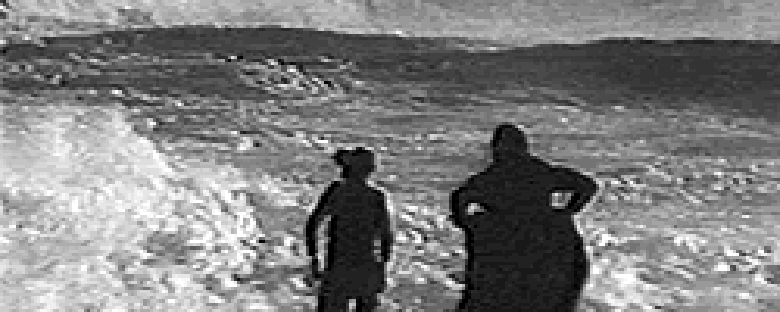Reviews
Robert Flaherty
UK, 1934
Credits
Review by Matt Bailey
Posted on 11 July 2004
Source Home Vision Entertainment DVD
The Man of Aran lives a difficult life. To raise his potatoes, The Man of Aran and his family must make their own soil by breaking rocks, hauling seaweed from the ocean, and scouring crevices on the windswept island for the last traces of natural soil. To fish, he must weather unpredictable and rocky seas that shatter his boat into tindersticks and shred his nets beyond repair. To light his lamps, he must hunt sharks to boil down their skin and livers for oil. In short, for the Man of Aran, life is difficult.
Robert Flaherty’s film, Man of Aran, follows a similar formula as his Nanook of the North, and probably includes just as much fakery. I doubt very much that shark hunting was a daily occurrence in the 1930s, even on the remote Aran Islands of Western Ireland, but I could be wrong. Fakery aside (because who really cares), what makes this a lesser film than Nanook is that we don’t really get a sense of who these people are. Surely their lives couldn’t be constant drudgery, otherwise what would stop them from flinging themselves off the tall and picturesque cliffs of their island? Where are the scenes of family meals? Of rest after a long day’s work? Of social interaction with other people in the village?
What we are left with is, I think, an attempt to give us a representative day in the Aran Islands, even though it’s a far stretch to think that all of these events could have occurred in a single day. There are no night scenes in the film, and day does not seem to pass from dawn to dusk. There is only hard work under grey skies. Those skies, however, are beautifully shot. Much of the film is composed with very low horizon lines that show the Man of Aran (as well as the Woman of Aran and the Child of Aran) silhouetted against and dwarfed by the threatening skies that fill almost the entire frame. Other stunning shots invert the composition and fill the frame with the rocky cliffs of the island on which the people look out to sea.
The scenes of shark hunting that fill almost half of the film, despite their implausibility, are both more thrilling than you would expect and less thrilling than you would like them to be. The large portion of the thrills come from some very surprising and effective montage-style constructive editing that is rarely seen outside the Soviet silent cinema. This style of editing was made possible because the film was shot without synchronized sound, edited, and then enhanced with a soundtrack featuring orchestrated music, the sounds of crashing waves, and overdubbed voices in an almost incomprehensible dialect and accent. The soundtrack is slightly distracting in that those overdubbed voices often don’t match up with what the figures in the film are actually doing or saying. This minor problem is swept aside by the elegantly composed images.
Man of Aran definitely shows the influence of Soviet cinema and the John Grierson style of British poetic documentary, but the style and subject, fakery and all, is pure Flaherty.
We don’t do comments anymore, but you may contact us here or find us on Twitter or Facebook.



